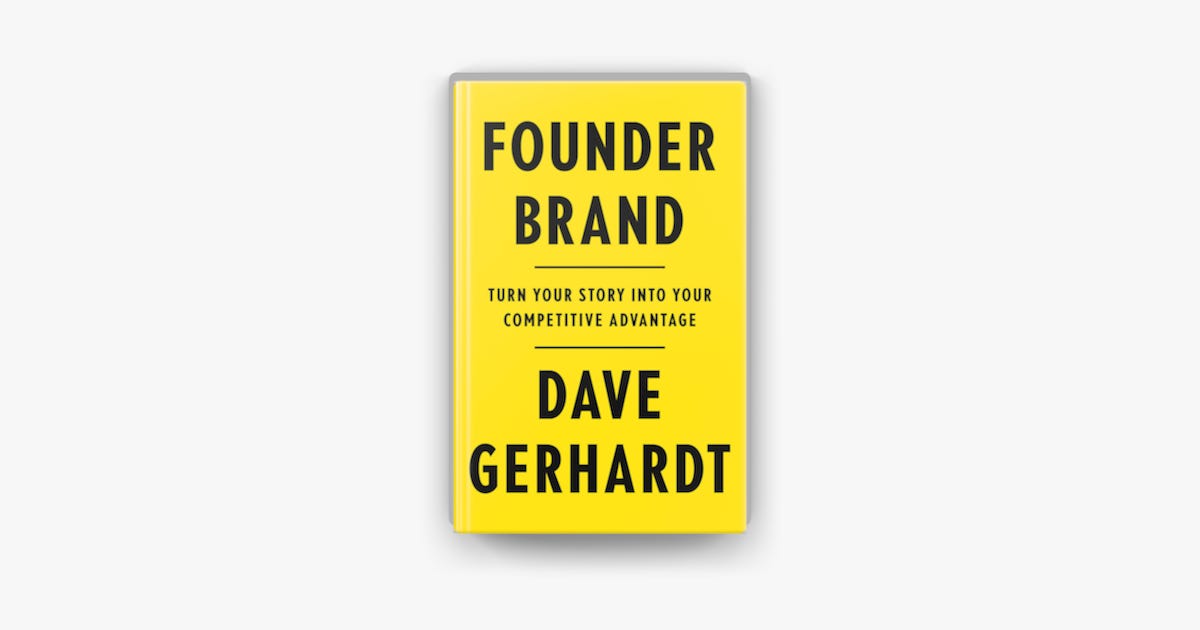Founder Brand, Awareness VS Conversions, And Sending Traffic To The Right Pages
Leverage your company’s founders to create trust and drive revenue • Use social media for awareness and emails for conversions • Different website pages, different parts of the funnel, different goals
Lesson #1: Leverage your company’s founders to create trust and drive revenue
I recently read Dave Gerhardt’s book “Founder Brand”. Here are my key takeaways:
Today, people want to buy from people. We want to work with people who we know, like, and trust. If your company has a founder willing to become “the face” of the company, that can be an incredible way to create trust and drive revenue.
Tesla has been able to become the world’s most valuable car company without spending a cent on advertising because founder Elon Musk has such a powerful brand.
Steps:
1) Learn how to tell the founder’s story so it draws people in.
2) Become a publisher: start with Twitter and LinkedIn and tell the founder’s story. Launch a podcast. Publish the best parts of each podcast episode on Twitter and Linkedin.
3) Once you are established as a publisher, you then focus on your metrics, and mastering the feedback loop. Respond personally to all the feedback you get on social media, and learn from it so you can create better content in the future.
Lesson #2: Use social media for awareness and emails for conversions
Your audience likely uses some social media to consume content, network with peers and, discover products.
If you publish valuable content on their social media platform of choice, you can likely drive impressions, likes, and website traffic.
But, they might be not ready to take the next step and schedule a meeting.
Don’t give up on because of that.
Social media campaigns (both organic and paid) can be run in parallel to other channels, for example emails, to create awareness and familiarity with the brand and improve conversions.
Try creating a list of prospects at target companies, split them in two groups and target the first group with ads for awareness and emails for conversions and the second group with just emails.
How many more conversions can you get from emails when you support them with ads?
Lesson #3: Different website pages, different parts of the funnel, different goals
You always want to send the right traffic at the right website pages.
The homepage gives visitors an overview of the company and the product. It gives context to people who know nothing about you and helps them start their journey where they’ll learn more about you.
You probably don’t want to drive traffic to the homepage if you have more specific pages.
You’ll have some website pages that are more specific than the homepage and help customers at the top of the funnel.
On these TOFU pages, you educate the customers about the problem that your product solves and how it solves it, without getting into too much detail about how the product actually works. An example of this kind of page is our "why Nira" page.
Then, you’ll have some other pages that are even more specific and are for middle-of-the-funnel customers.
On MOFU pages you go deeper on specific issues. You explain thoroughly how your product works with detailed guides and documentation. Our use case pages on the Nira website are an example of this.







